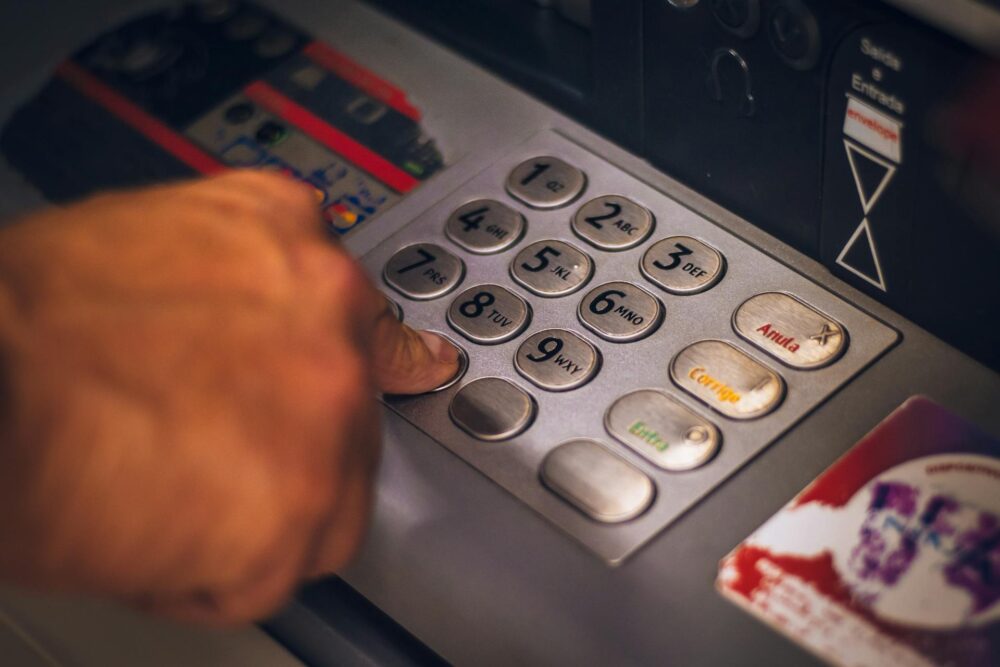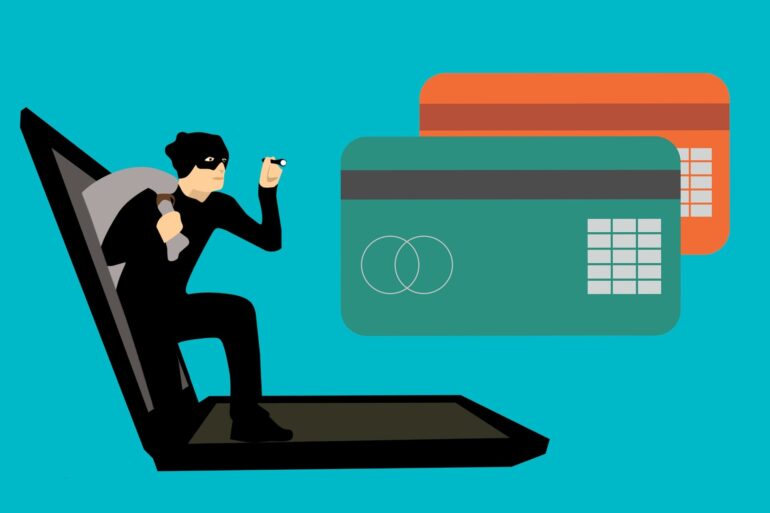In today’s business world, non-cash transactions are a cornerstone of modern business, as they offer convenience to customers while allowing merchants to boost sales. However, this convenience also comes with the ever-present threat of different types of credit card fraud that can have severe consequences for businesses of all sizes. Merchants should stay alert and gain every piece of information they can to stay one step ahead of cybercriminals.
How Various Types of Credit Card Fraud Affect Merchants, Customers, and Banks
For merchants, fraud results in direct financial losses, including stolen goods, chargeback fees, and potential fines. It can also damage their reputation, which leads to a loss of customer trust and has an impact on future sales. Customers, on the other hand, face the inconvenience of having their cards compromised, often dealing with the stress of reversing fraudulent transactions and securing their personal data.
While banks and financial institutions usually absorb the cost of fraud protection and reimbursement, they also face significant financial losses. Additionally, fraud forces banks to invest heavily in advanced security technologies and fraud detection systems, and it all amounts to higher operational costs.
The Growing Threat of This Type of Scam
Losses caused by credit card fraud are reaching staggering levels each year, so it’s a major concern for merchants globally. According to the Nilson Report, global card fraud losses amounted to $32.34 billion in 2022, and they are projected to exceed $38.5 billion by 2027.
In the US alone, which accounts for nearly 33% of global card fraud despite having only 22% of global card volume, fraud is a growing issue, especially in card-not-present (CNP) transactions. As e-commerce expands, so does the complexity and frequency of fraud, and that’s why merchants need to stay informed and implement proactive security measures.

Card-Not-Present (CNP) Fraud
Wondering what type of credit card fraud is the most common? The type of scam known as Card-Not-Present (CNP) fraud is the most common one, and it happens when a transaction is made without the physical card being present. This typically occurs in online, phone, or mail orders.
Since the merchant cannot physically verify the card, fraudsters exploit this weakness by using stolen card information to make unauthorized purchases. CNP fraud is a growing threat, especially as e-commerce continues to expand globally. In fact, statistics say that it made up nearly 70% of global fraud losses in 2020, amounting to $19.43 billion.
This trend is expected to worsen as digital transactions increase. Many fraud incidents occur in industries such as retail, travel, and online entertainment. E-commerce merchants, in particular, are vulnerable, as transactions don’t require a physical card. Here are the signs to watch out for:
- Unusually large orders, especially from new customers.
- Shipping addresses that differ from the billing address.
- Multiple purchases made in a short period, often with different cards.
- Requests for expedited shipping to avoid detection.
Some Prevention Tips for CNP Fraud
One key method of prevention for CNP fraud is the Address Verification System (AVS), which checks whether the billing address provided by the customer matches the one on file with the card issuer. Requiring the Card Verification Value (CVV) for transactions adds another layer of protection by confirming that the customer has physical access to the card. Additionally, using 3D Secure technology, such as Verified by Visa or Mastercard SecureCode, enables an extra authentication step during checkout.

Card-Present Fraud (Skimming and Cloning)
Card-present fraud happens when a physical card is used to make fraudulent transactions, often through skimming or cloning. Skimming happens when fraudsters install hidden devices on card readers, such as at ATMs or gas stations, to capture card details from the magnetic strip secretly. Once they obtain this data, they can create a cloned card, which is a counterfeit copy used for unauthorized purchases.
Prevention Tips for Card-Present Fraud
If you adopt some preventative measures, it’s possible to avoid skimming and cloning happening at your brick-and-mortar location. Here is what you can do to significantly reduce the risk of card-present fraud:
- Use EMV chip readers. Chip cards are much harder to skim than traditional magnetic stripe cards, as the chip generates a unique transaction code each time the card is used, so it’s difficult to duplicate.
- Check for tampered card readers. Merchants should regularly inspect card terminals, ATMs, and other card readers for signs of tampering, such as loose or misaligned parts or suspicious attachments.
- Invest in employee training. It’s essential to make sure your staff is trained to spot signs of skimming devices and irregular card reader activity.

Account Takeover Fraud
Account takeover fraud occurs when hackers gain unauthorized access to a legitimate user’s account, typically through methods such as phishing, credential stuffing, or exploiting weak passwords. Once inside, fraudsters can change account details, make unauthorized purchases, or even drain loyalty points. This can lead to significant losses for both merchants and customers.
For merchants, the repercussions can be severe. They may face financial losses from chargebacks, damaged customer relationships, and the cost of implementing additional security measures. Customers, on the other hand, suffer from compromised personal information, financial losses, and the hassle of reclaiming their accounts and disputing fraudulent transactions.
Prevention Measures to Counter Account Takeover Fraud
This type of scam needs to be proactively addressed so merchants can protect their business along with their customers from negative consequences. Here are the prevention measures to take:
- One of the most important prevention measures to counter this type of attack is multi-factor authentication (MFA). Using it adds an extra layer of security because users have to verify their identity through multiple methods, such as a text message code or an authentication app.
- Regularly reviewing account activity on your merchant statements can help identify suspicious behavior early. Merchants should set up alerts for unusual login attempts or transactions to enable prompt action to avoid potential damage.

Friendly Fraud (Chargeback Fraud)
Friendly fraud, widely known among merchants as chargeback fraud, happens when a buyer makes a legitimate purchase but later on disputes the transaction, and claims they never received the goods or did not authorize the charge. This type of fraud is often unintentional, resulting from customer confusion or misunderstanding, though it can also be deliberate when customers try to get their money back while keeping the purchased items.
The chargeback process allows customers to request a refund from their card issuer and bypass the merchant entirely. When a chargeback is filed, the merchant loses the sale and can be hit with the chargeback fees at the same time. Merchants also have to prove the transaction is legitimate, so maintaining proper documentation of transactions, including proof of delivery and records of customer interactions, can be crucial for defending against fraudulent chargebacks.
After all, high chargeback rates can even lead to penalties or early termination of the merchant’s account with credit card processing companies.

Synthetic Identity Fraud
When thieves make a fake identity by mixing real and fake information, like using a real Social Security number with a fake name and address, this is called synthetic identity fraud. In traditional identity theft, the whole victim’s name is stolen and used, but in synthetic identity fraud, false information is mixed together to make a new persona. This makes it harder to catch because there isn’t a single person who will report the fraud, and the fake name can go unnoticed for a long time.
To stop synthetic identity fraud, businesses should take proactive steps that help them spot and stop any suspicious behavior. Be alert to unusual activity, such as inconsistent shipping and billing information or multiple small purchases made in a short timeframe, which could signal synthetic identity fraud. And implement identity verification tools that cross-check customer details, like Social Security numbers or other credentials, to make sure the person behind the transaction is legitimate.

Lost/Stolen Card Fraud
If someone steals or loses a credit card, it can be used to make purchases without permission, both in-store and online. This is called lost or stolen card theft. If thieves get their hands on a card, they can use it right away, before the cardholder even knows it’s gone. In physical stores, this kind of fraud is especially dangerous because thieves can just swipe the card and get in without any other proof. They might also try to get around security measures online to use the stolen card to buy things.
Some Useful Prevention Tips
To lower the risks of fraud involving lost or stolen cards, both merchants and cardholders need to act quickly and effectively. Here are some important tips for preventing fraud that can help lower the chances of unauthorized transactions and keep everyone from losing money:
- Cardholders should report lost or stolen cards immediately to prevent further unauthorized use. Merchants can encourage customers to take swift action if they suspect their card is compromised.
- Merchants should use credit card processing services or bank systems that offer real-time fraud alerts, and notify cardholders instantly of any suspicious activity.
- Merchants should also implement extra verification measures, such as requiring PIN codes or photo IDs for in-store purchases, to reduce the likelihood of unauthorized transactions using lost or stolen cards.
Lost or stolen card fraud can be less of a problem for both businesses and customers if they stay alert and use these safety tips.

Protect Your Business From Credit Card Fraud
In today’s digital world, it’s important to spend money on strong fraud prevention tools like identity verification, fraud detection and prevention systems, and safe payment technologies. Remember, most fraudsters can be caught by merchants if you stay alert and regularly check all transactions. On top of it all, partnering with a reliable credit card processing company can help you provide customers with more secure payment options.
Get in touch with Merchant Chimp right away to learn more about how to keep your business safe with our secure payment solutions. Our merchant services and credit card processing give you the tools and help you need to keep your business safe and cut down on fraud.







